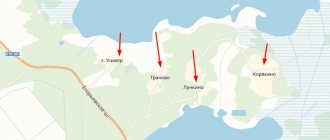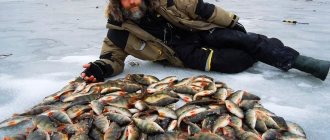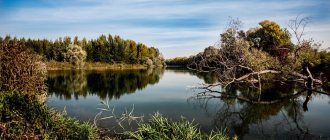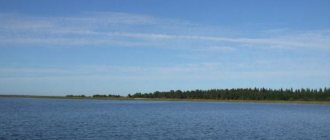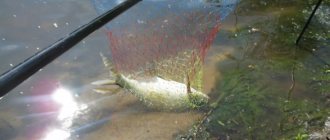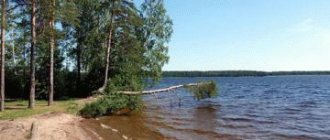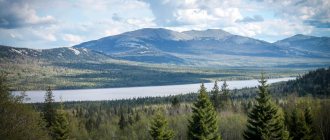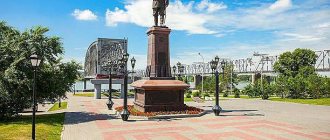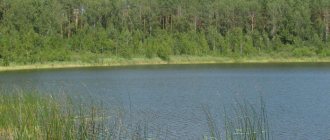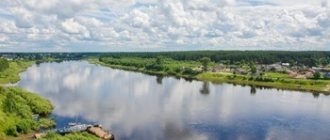Fishing in the Ryazan region
popular no less than in other regions of Russia.
A huge number of people choose fishing as their main form of active recreation, including in Ryazan
.
Fishing in the Ryazan region
attracts many people from neighboring regions. After all, the Ryazan region is a fertile land of picturesque rivers and lakes with which it abounds. Many guests of the Ryazan region come here on weekends, and some like Ryazan fishing so much that they spend their vacation here, enjoying the magnificent nature and silence, where nothing interferes with their favorite hobby.
Content
- 1 Reservoirs in Ryazan and the Ryazan region 1.1 Rivers
- 1.2 Lakes
- 1.3 Reservoirs
- 3.1 Fishing in the Ryazan region on the Tsna River
- 4.1 Tackle
Reservoirs frequently visited by fishermen
White Lake
This reservoir is of karst origin, surrounded by continuous forest. The nature here is wonderful - the silence and the shade from nearby trees are conducive to fishing. Here in the summer you can meet many fishing enthusiasts, but you can always find a place for fishing from the shore. Fishing is best done in the summer, but even in winter, ice fishing enthusiasts leave with notable trophies.
Read: Fishing on Lake Onega
Seleznevskoye Lake
On this lake it is better to use a feeder and float gear for fishing. Most often, peaceful fish species are caught here, but many fishermen use spinning rods to catch pike and perch.
Great Lake
Around this reservoir in the spring and summer the area becomes swampy, and there are also many peat bogs around it. Therefore, you can only fish here in winter. But even at this time of year, fishermen rarely leave the lake without a catch.
Reservoirs in Ryazan and the Ryazan region
Ryazan Oblast
is one of the most endowed with various water resources. The main water artery is the Oka River, which flows through the region from the border with the Moscow region to the very border with the Vladimir region.
In total, 895 rivers with a length of three kilometers or more flow through the territory of this region, of which 29 rivers are more than 50 meters long. The length is more than 10,000 kilometers. The largest rivers are Vysha, Tsna, Pra, Moksha and others. These rivers are flat with high floods in the spring. In addition, there are more than 2,800 lakes in this region. The largest lakes are located in the Klepikovsky district in the upper reaches of the Pra River and form a system of lakes.
Rivers
Map of rivers of the Ryazan region
- The Solotcha River
is a left tributary of the Oka, flows out of Lake Negar in the north-west of the Ryazan region, flows south through swamps and forests and flows into the Oka above the city of Ryazan. The length is about 50 km, the average slope is 0.558 m/km. Solotcha has several tributaries and artificial canals through which water flows into the river. - The Vozha River
is a right tributary of the Oka, flows from a lake near the village of Furmakino, flows through the west of the Ryazan region near the border with Moscow and flows into the Oka above the city of Ryazan. The length of the river is 103 km, the average gradient is 0.275 m/km. - The Mecha River
is a left tributary of the Vozha, flows from a lake near the village of Pleshki, Moscow Region, and flows into the Vozha. - The Istya River
is a right tributary of the Oka, flows from the springs near the village of Baidiki and flows into the Oka. - The Tyrnitsa River
is a right tributary of the Oka, flows in the southeast of the Ryazan region from springs near the village of Fedosovo and flows into the Oka. It flows initially in open banks to the northwest; in the middle course, aspen forests approach the right bank. North of the Ryazan-Sasovo railway line it turns north and northwest to the Oka. The length of the river is 105 km, the average gradient is 0.468 m/km. - The Vyntsa River
is the right tributary of Tyrnitsa, it is formed near the village of Krasny Pakhar and flows into Tyrnitsa. - The Srednik River
is a right tributary of the Oka, flows from a spring near the village of Krasnaya Polyana and flows into the Oka. - The Pet River
is a right tributary of the Oka, formed near the village of Pet and flows into the Oka. - The Unzha River
is a left tributary of the Oka, flows out of the swamps near the city of Melenki, Vladimir region, and flows into the Oka. The length of the river is 122 km, the average gradient is 0.431 m/km. - The Moksha River
is a large right tributary of the Oka, formed in the Penza region and flows into the Oka below the city of Kasimov. The total length of the river is 656 km. Moksha is navigable from Kadom. - The Ermish River
is the right tributary of the Moksha, flows out of the lake near the village of Ermish and flows into the Moksha. - The Tsna River
is a large left tributary of the Moksha, formed in the Tambov region and flows into the Moksha at the 44th km near the village of Ustye. The length of the river is 451 km. The banks of the Tsna are mostly meadow, the channel is winding, the speed is low: from 0.4 km/h on the reaches to 1.5 km/h on the rifts, there is a lot of algae and reed thickets. The right bank is sparsely populated, the forest is beyond the meadows, and sometimes comes close to the water. The left bank is almost entirely lined with fields and villages. Six waterworks were built on the Tsna, and therefore the river is navigable. - The Shacha River
is a left tributary of the Tsna, formed near the village of Shacha and flows into the Tsna. - The Aleshnya River
is a left tributary of the Tsna, formed near the village of Kistenevo and flows into the Tsna. - The Para River
is a right tributary of the Oka, flows out of a lake near the village of Parsky Ugol and flows into the Oka. It flows first along the steppe plain to the north, northwest and north on mostly open banks. The length of the river is 192 km, the average gradient is 0.296 m/km. - The Verda River
is a left tributary of the Pair, flows out of a lake near the village of Bolshaya Verda and flows into the Para at the 111th km. Flows north-northeast along the steppe plain. The length of the river is 62 km, the average gradient is 0.326 m/km. - The Verditsa River
is the right tributary of the Verda, flows from a lake near the village of Troitskoye and flows into the Verda. - The Pozhva River
is a left tributary of the Pair, flows out of a lake near the village of Zhelobovo and flows into the Para. - The Pronya River
is a right tributary of the Oka, flows out of the swamps near the village of Luzhki and flows into the Oka. The river flows through a winding narrow valley. The length of the river is 336 km, the average gradient is 0.3 m/km. The Proni Valley is open, the bottom is muddy, rocky and sandy in places, the depths are shallow. The riverbed is winding and the flow is slow during low water. The banks in the upper reaches are steep, high and precipitous in places. In the upper reaches, near the village of Solnechnoye, for the needs of agriculture and industry, the Pronsky reservoir was created, which spilled over the territory of the Tula and Ryazan regions. From the village of Rzhevskoye to Khrushchevsky Vyselki, the width of the reservoir reaches 3 km. In its middle course, the Pronya flows along the Oka-Don Plain. In the forest-steppe zone. There are almost no forests along the banks. In the middle reaches, near the city of Novomichurinsk, a reservoir was created for the Ryazan State District Power Plant. In the lower reaches the river is navigable for 30 km. - The Kerdy River
is the right tributary of the Pronya, flows out of a lake near the village of Surovtsy and flows into the Pronya at the 129th km. - The Ranova River
, a right tributary of the Pronya, is formed on the eastern slopes of the Central Russian Upland near the village of Muraevnya in the southwest of the Ryazan region and flows into the Pronya at the 46th km. The length of the river is 166 km, the average gradient is 0.31 m/km. In the upper reaches of the Ranova it flows on high banks, in the Oka-Don Plain the height of the banks decreases, and in the lower reaches of the river they are low-lying and swampy. In the valley there are wide sandy stripes with pine forests. - The Polotebnya River
is a left tributary of the Ranova, formed from the confluence of the Sukhaya and Mokraya Polotebnya rivers (sheet 25) at a level of 122 m and flows into the Ranova at a level of 113 m. - The Verda River
is a left tributary of the Ranova, formed on the eastern slopes of the Central Russian Upland near the village of Dmitrievo and flows east and southeast along a treeless steppe plain and flows into the Ranova at the 89th km. The length of the river is 91 km, the average gradient is 0.359 m/km. - The Khupta River
is the right tributary of Ranova, flows from a lake near the village of Volynshchino and flows into Ranova at the 63rd km. The Khupta flows first along the steppe plain to the byu, southwest, then turning at the village of Sergievsky Borovik to the west, and from the village of Kalinino to the north. The length of the river is 101 km, the average gradient is 0.606 m/km. - The Mosha River
is a left tributary of Ranova, flows from a lake near the village of Sistovka and flows into Ranova. - The Mostya River
is a right tributary of the Ranova, formed near the village of Mostya and flows into the Ranova. Seletskoe hunting farm is located 40 kilometers northwest of Ryazan, on the border with the Moscow region. Its area is 28 thousand hectares, including forest lands - 21.2 thousand hectares, water lands - 1.5 thousand hectares.
Lakes
- White Lake
is located in the Klepikovsky district of the Ryazan region, has an area of about 33 hectares, the lake is quite deep, in some places there are karst sinkholes up to 100 meters deep. The bottom is muddy, the shores are sandy, overgrown in many places with dense thickets of reeds and reeds. Thanks to the picturesque pine forest located around the lake, the air in this quiet and amazing place is always clean and fresh. There are a lot of fish and crayfish in the lake, the water is always surprisingly clear, this creates excellent conditions for fishing, including underwater fishing. The water is always cool, even in the hot summer months - only 15 degrees at the surface and about 5-6 at depth, therefore, only very seasoned vacationers can swim in this reservoir. - Lake Velikoye
is located not far from Lake Beloye; some time ago they were even connected by a small channel, which later dried up. The area of the reservoir is 20.7 sq. km, the maximum depth is 5 meters. The lake has several islands, shores, and mostly swampy ones. The lake is a natural monument; many valuable and rare plants grow on its shores, various species of birds nest, and the reservoir itself is rich in fish. - Lake Svyatoye
is located in the Spassky district of the region. The area of the reservoir is about 700 hectares, it has an almost circular shape, the maximum depth is about 5 meters. The lake amazes with its unusual water - soft to the touch and emerald-transparent in appearance. The lake is fed by springs, so the water in it is always clean and cold. Local residents attribute the reservoir to an “unearthly” origin, and the water is considered to heal many ailments.
Reservoirs
- The reservoir of the Ryazan State District Power Plant
is a popular fishing spot in the Ryazan region. It was founded in 1973 by blocking the bed of the Pronya River. Many fishermen prefer to fish there due to the fact that the reservoir is unusually rich in fish resources. Due to the fact that the water does not freeze in winter, fishing here is possible all year round. Most often you can catch pike, pike perch, bream, crucian carp and carp. There are enough deep places in the reservoir, which makes it possible to catch trophy fish, especially grass carp or carp. - The Pronsky Reservoir
is a reservoir formed on the Pronya River on the border of the Tula and Ryazan regions. The dam site is located near the village of Gremyachee, Novomoskovsk district. The length of the reservoir extends for 26 km, and its maximum width reaches 2 km. The surface area of the reservoir is 1620 hectares. The average depth is 4.4 m. The reservoir abounds with ichthyofauna inhabitants. Lots of pike perch, bream, carp, crucian carp, pike.
Types of fish in reservoirs
The list of registered fish in natural reservoirs of the Ryazan region currently includes 70 species and 3 hybrids.
Unfortunately, as a result of deforestation, drainage of swamps, construction of dams on the Volga and Don, preventing entry into the upper reaches of the Don and Oka, and water pollution with untreated discharges, many species of commercially valuable fish disappeared in the middle of the last century: brook trout and grayling, almost all types of sturgeon, herring and salmon. Most of the remaining species have become rare, and, in general, fish have lost their commercial importance.
New species of fish - rotan, stickleback and some others - penetrated into the water bodies of the region through water systems. Among the most commonly found fish in the rivers and lakes of the Ryazan region are rotan, roach, perch, crucian carp, bream, asp, pike perch and pike.
Frontier fisheries are primarily focused on carp breeding.
Fishing and relaxation on the lake
The following types of fish are caught on the lake:
Pike, perch, ide, roach, silver bream, tench and crucian carp, loaches, bluegill and verkhovka are also found.
The bottom is muddy.
Due to the everywhere overgrown and swampy shores, fishing from the shore is problematic, so the main fishing takes place on a boat with a spinning rod. Lures for fishing with a spinning rod are standard rotating and oscillating spoons, wobblers, and a popper works well in the fall. The average weight of baits is 10-12 grams.
In the spring, pike and perch stand at the entrance of the Pra River, since fish enter the lake from there; in the summer, they stand and feed near the shore; in the fall, they are distributed throughout the reservoir, looking for places to winter.
We recommend: Minimum fish sizes allowed for catching for the Baikal fishery basin, save to bookmarks
There are no trophy pike; the average weight of one specimen reaches 1-5 kg.
It is practically impossible to organize a tent holiday on the lake due to the lack of normal shores, therefore, as an option, use the territory of tourist centers for recreation.
Best fishing spots
On the territory of the Ryazan region there are many recreation centers, which are located directly near reservoirs. Here every visitor has the opportunity to take all the necessary equipment and go fishing at any time. This is especially convenient for those who come from afar.
Fishing in the Ryazan region on the Tsna River
- Location:
about 380 km from Moscow, Ryazan region, Shatsky district. Near the village of Lesnoye Konobeevo. - Fishing:
perch, ruffe, crucian carp, pike. Fishing with a vibrotail, spoon. Now the Tsna River has ceased to be navigable, so it is overgrown and you need to take non-snag-proof ones with you. - Directions:
follow the highway to Ryazan, go around it on the right, move towards the city of Shatsk, and after 15 km there will be Lesnoye Konobeevo. It’s better to go a little higher upstream - there’s a small hydroelectric power station, in the sliver of the bypass canal and the Tsna itself a good place.
Hunting and fishing farm Ivanovskoye
- Location:
Klepikovsky district, Ryazan region. Distance from Moscow – 220 km. The farm area is 21 thousand hectares. - Fishing:
perch, ruff, rotan, crucian carp, pike, ide, bream, roach. - The farm provides the following services:
recreation, fishing, hunting wild ungulates, hares, fur-bearing animals, waterfowl and swamp game, woodcock. To receive and accommodate hunters, fishermen and vacationers, the farm has 8 houses with 60 beds.
Fishing and hunting base Major Pronin
- Location:
in the Ryazan region, 220 km from the Moscow Ring Road in the lower reaches of the Pronya River, 1.5 km from the confluence with the Oka. - Fishing:
the Pronya River is interesting for all types of fishing in both summer and winter. There are a lot of large pike, pike perch, perch, catfish, bream, roach, asp and carp in the river.
Hunting farm Seletskoye
- Location:
40 kilometers northwest of Ryazan, on the border with the Moscow region. Its area is 28 thousand hectares, including forest lands - 21.2 thousand hectares, water lands - 1.5 thousand hectares. Pine predominates with an admixture of birch. In the northern part of the farm there are impassable swamps. The Oka flows along the southern border. In the floodplain of the oxbow, swamps. The central estate on the Khvorostovo farm. - Fishing:
pike, perch, pike perch, chub, silver bream, roach. - Directions:
from Beloomut, then on foot or by passing transport through the village of Seltsy to the place.
Hunting estate Kiritskoye
- Location:
40 kilometers southeast of Ryazan on an area of 26.2 thousand hectares. The Oka and Pronya rivers. - Fishing:
bream, pike, ide, perch, roach, chub, asp, sabrefish, sterlet. There are many oxbow lakes and small lakes in the river floodplains. The largest lakes are Nikitskoye, Kresty, Pirogovskoye, Sadovoye. The central estate is located near the village of Zasechye. - Directions:
from Ryazan along the highway to the village of Kiritsy, then 2 km along a dirt road.
Fishing Features
And although it is believed that fishing in the Ryazan region, especially on the Oka, leaves no one without a catch, it is not so easy to catch good fish here. To do this, it is important to study the bottom topography, as well as the habits of the intended prey, its feeding places, habitats and hibernation, if we are talking about winter. It is not difficult for experienced fishermen to find a productive place. For beginners, Oka is a great place to develop the necessary skills for catching large fish.
Tackle
The most important thing in fishing on the small rivers of the Ryazan region is not to rush, but to choose bait wisely and experiment effectively with fishing. Rotating spinners with front loading show good results in these conditions. The weight of such baits is from 5 to 13 grams. In small areas in sunny weather, baits with a silver petal have proven themselves better. On riffles and whirlpools, a lot of pike and large perch are caught on a spinner with a yellow and dull petal. In moderate currents, it is good to fish with floating wobblers, slowly, floating the wobbler under overhanging trees and bushes, where a lot of different predators stand. For spinning fishing on small rivers of the Ryazan region, heavy-duty tackle is not required. A form with universal dough from 5 to 30 grams is quite enough. The reel is suitable for size 2500 equipped with braid up to 15 mm. Only when fishing with small baits can you switch to thinner braid or use a 0.22 mm monofilament line. For catching numerous leucorrhoea with a float rod, a rod 5-8 meters long is suitable. A longer rod is not needed, since a 7-meter rod is enough to fish the coastal zone and reach the riverbed edges. It is not difficult to select a fishing line and its diameter; a universal diameter of the main fishing line of 0.14 mm and a leader of 0.12 mm will do. It is important not to forget to take a landing net with a long handle, since on Prona there are often large bream weighing 2 kg in catches. Fishing with a feeder is also appropriate on Prona. Excellent baits are classic pearl barley, steamed wheat grains, rolled oats flakes, dung worm and maggot. If you don’t rush and spend a little time on baiting and baiting the fish, then the fishing results will be even more significant than catching at random. By mid-summer, jig fishing in grass windows is popular in Prona and Ranov, which brings decent crucian carp, tench and bream.
Fishing rules
In accordance with the rules of sport and recreational fishing, there are minimum sizes of fish that can be taken home as prey:
- asp - 40 centimeters,
- pike perch – 40 centimeters,
- bream – 25 centimeters,
- pike – 32 centimeters,
- ide - 25 centimeters,
- sabrefish – 22 centimeters,
- subust – 24 centimeters,
- catfish – 90 centimeters.
During spawning, fishing is permitted exclusively using a float rod. You cannot fish in the dark from any watercraft. In addition, fishing is also prohibited from unregistered watercraft, with the exception of rowing vessels with a carrying capacity of 100 kilograms, kayaks up to 150 kilograms, and inflatable watercraft up to 225 kilograms. Fishing from any vessels in the territory of production and fishing areas is prohibited.
Winter fishing
Winter fishing in the Ryazan region begins from the moment when the ice cover has already reached the required thickness. At this time of year, the most common prey items are pike perch and bream, roach or perch. They are caught throughout the winter, from the first freeze-up until spring. For this purpose, a variety of types of baits are used. Pike, for example, is best caught in the season when the temperature is around zero degrees. In small rivers and lakes in winter, fish suffer greatly from death, so most of them migrate to the Oka in the fall, and in the spring they rise from it again to their favorite habitats, where they feed and begin to spawn in secluded and warm backwaters.
Fishing on the Pronya River
The Ryazan region, in general, is a real paradise for fishermen, because there are a lot of places for normal fishing here. The location of the region is also convenient for the capital’s fishermen because it is not too far to get to the “catchable” fishing spots - only about 200-300 km. And driving along the Ryazan highway is a pleasure, because... This is a very wide and flat track. True, closer to Ryazan the road will begin to get very frustrating, because... smooth asphalt can be replaced by potholes and potholes. However, this inconvenience can continue for 30-40 km, after which the route again becomes flat and wide.
One of the notable rivers in the Ryazan region is the Pronya River. For those who have never been there before, one way or another, you will have to fish at random. Those. in any convenient place available. From some point of view, fish can actually be caught in such places. And all because fishermen do not like such places, so the fish prefer to come here. A pretty good place turns out to be at the confluence of the Prony and the Oka. These rivers flow with different currents, so the water washes up a wonderful spit. True, the impression can sometimes be greatly spoiled at those moments when the locks raise the water level in the Oka, so the water becomes cloudy and the current is fast. As a result, those fish that prefer to live in bottom holes simply leave there.
Read: Fishing on the Munakan River
It may seem strange, but when fishing on Prona, the luckiest time is considered to be from 13 to 14 o'clock in the afternoon. And all because the reservoir is usually empty at such hours, because... Some fishermen are leaving, while others are just getting ready for fishing at dawn. So this time will be beneficial especially for beginners, when no one will interfere with their fishing. And the practice of fishing on this river precisely at these hours fully confirms this. If a strong wind starts, then as a rule, a strong wave begins to move through the water, which, not only makes it difficult to follow the float, but also greatly agitates the water and contributes to the fact that the fry begins to move away from the shore. At such a time, asp can no longer be caught near the shore itself, but at a certain distance from it, where the steady flow of the river “dominates” and there is a flat and almost level bottom. If you catch an asp from a boat, then even during water ripples and relative turbidity of the water, this fish can safely approach almost the very board and grab the bait in the form of a fry attached to a hook.
Read: All the intricacies of fishing on Lake Baikal
When the sun shines in the sky, i.e. The weather is clear, then the fry, on the contrary, begins to approach closer to the shore. The following can be said about Prona itself, as a potential river for fishing. In principle, this is a very good river, on which there are enough excellent places for fishing, in particular for asp. There is just one drawback that is quite significant and it is that although the river itself is wide, there is no forest along its banks, so there is simply nowhere to hide from the heat and scorching sun.
But the almost perfectly clear water and picturesque banks of Pronya add to the impressions. The most beautiful thing in central Russia! Trolling is mainly practiced here as a form of fishing. This is of course good, but there are a lot of people who like to troll on weekends, so it can be a little annoying. Insects such as mosquitoes and midges do not interfere with fishing, because a slight breeze and endless open spaces contribute to the fact that they simply do not exist. Although in the evening, when there is complete calm on the river, insects can get a little annoying. And even then, only near the shore.
Subscribe to
our channel in Yandex Zen
see also
|
|
|
